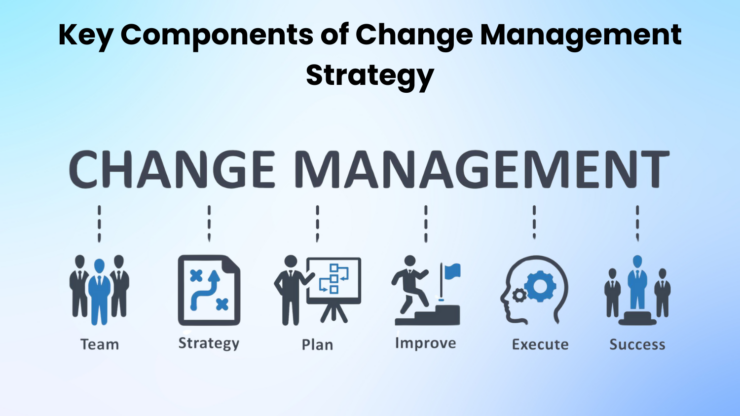The only constant in life is change, so being able to manage and spearhead change is crucial in the business world. Organisational change is a multifaceted process that includes people, systems, and culture. It goes beyond just adjusting to new technologies or procedures. Considering Change Management Online Courses can be a crucial step for individuals who want to become experts in this field regarding their professional development.
In this blog, we will look at the key elements of a Change Management Strategy and provide insight into how companies can successfully manage change.
Table of Contents
- Defining Change Management
- The Role of Change Management Strategy
- Components of Change Management Strategy
- Clear Vision and Objectives
- Effective Communication Plan
- Engagement and Involvement
- Comprehensive Risk Management
- Skill Development and Training
- Leadership Support and Alignment
- Feedback Mechanism
- Leveraging Change Management Courses
- Conclusion
Defining Change Management
Change management is an organised method for moving people, groups, and organisations from their current state to a desired future state. It is more than just a catchphrase. It entails careful planning, communicating, and implementing strategies to lessen the impact of change on stakeholders and employees.
The Role of Change Management Strategy
A well-crafted change management strategy can help an organisation navigate the complexity of change. It guarantees a seamless transition, reduces opposition, and increases the likelihood of success. Let’s now analyse the essential elements that constitute the framework of a successful change management plan.
Components of Change Management Strategy
Clear Vision and Objectives
Before starting any transformation endeavour, a clear idea of the future state is essential. Together with this vision, measurable, defined goals should serve as checkpoints along the way. Introducing a change management strategy is similar to sailing on unknown waters; a successful voyage requires a defined goal and a navigational plan.
Effective Communication Plan
The foundation of any transformation endeavour is communication. A thorough communication plan guarantees that all organisation members are aware of the changes that are about to take place, why they are being made, and the advantages that will ensue. Effective communication becomes a talent that must be developed in online change management courses since it is essential to learning and implementing change strategies.
Engagement and Involvement
Employee participation and engagement at all levels are essential for successful change. Companies can access their employees’ combined knowledge by cultivating a feeling of possession and involvement. A collaborative approach that encourages individual participation in the transformation process makes a change management strategy work rather than being imposed from the top down.
Comprehensive Risk Management
Change is accompanied by uncertainty and risk. A robust change management plan includes a comprehensive risk assessment, identification of potential obstacles, and mitigating factors. By taking a proactive stance, companies may ensure that the change process stays on course and manoeuvres around any hurdles with agility.
Skill Development and Training
Bringing about change frequently requires the acquisition of new abilities. Organisations can give their teams focused training in online change management courses, giving them the skills to adjust to new working practices. A well-prepared staff better withstand change and may be a driving force behind the strategy’s effective execution.
Leadership Support and Alignment
Since effective change management depends on leadership backing, change starts at the top. Leaders must show commitment to change by endorsing it, communicating about it, and acting on it. They set the organisational tone by aligning with the change management plan.
Feedback Mechanism
An ongoing feedback loop is necessary to assess the change management strategy’s efficacy. This entails asking staff members for input, comparing results to goals, and making corrections. A successful change management plan must be able to adjust and improve based on real-time insights.
Leveraging Change Management Courses
Being proactive in your learning is essential for staying ahead of the curve in the professional world. Professionals can explore the nuances of change management through online courses, which provide them with the information and abilities necessary to lead efforts that bring about significant change in their organisations. These courses integrate academic principles and practical insights to thoroughly understand change dynamics and practical implementation tactics.
Conclusion
Although change is unavoidable, successful change results from careful preparation, calculated execution, and a people-centred mindset. An effective change management plan with all its essential elements is the cornerstone of organisational transformation. Incorporating online change management courses into professional development programs becomes a strategic investment as firms navigate the complexity of change and aim to cultivate a staff that can confidently and competently traverse the currents of change. Accepting change is not only necessary, but it also presents a chance for development, originality, and long-term success.







